It’s widely accepted that organic food is better for us and the environment, so it’s not a great leap to reason that organic paint would be just as good for our health, the environment, and the longevity of our boats. When it’s time to think about painting your boat, it’s well worth considering a natural, solvent-free paint. Allback Linseed Oil paint is produced with natural earth pigments and linseed oil pressed from organically grown flax seeds. Plant-based paints are nothing new; linseed oil paint predates today’s petroleum-based products. Modern alkyd resin and acrylic resin paints create a barrier between the wood and the marine environment, but water eventually finds its way into the wood, and the moisture sealed inside by the paint results in wood decay, causing the paint to bubble, crack, and fail. Linseed oil paint preserves the wood by allowing it to “breathe.”
 Capt. David Bill at Wooden Tangent, Mattapoisett, MA
Capt. David Bill at Wooden Tangent, Mattapoisett, MA Linseed oil soap, a 7-oz sample of linseed oil paint, and purified raw linseed oil
I ordered small samples of Allback’s raw organic linseed oil, their organic linseed-oil soap, and their linseed-oil paint to try out on strips of pine, teak, mahogany, cedar, and walnut. The oil and paint went on smoothly and dried flat without prominent brush marks. The paint dries to a flat or semigloss finish and can be turned into a high-gloss paint, according to the manufacturer, with the addition of some of their linseed-oil varnish. I used the nontoxic linseed-oil soap, rather than paint thinner, to clean the brush and my hands.
Linseed-oil paint adheres to all surfaces—wood, iron, glass, cured epoxy, and previously applied alkyd and acrylic paints—as long as they are clean, dry, and in good condition. Untreated wood doesn’t require a paint primer before finish coats are applied. If the wood is especially dry, a wiping-down with linseed oil, allowed to be well absorbed into the wood, will keep the paint where it belongs: at the surface. Apply at least two thin coats of linseed-oil paint, using a stiff natural brush to spread them out.
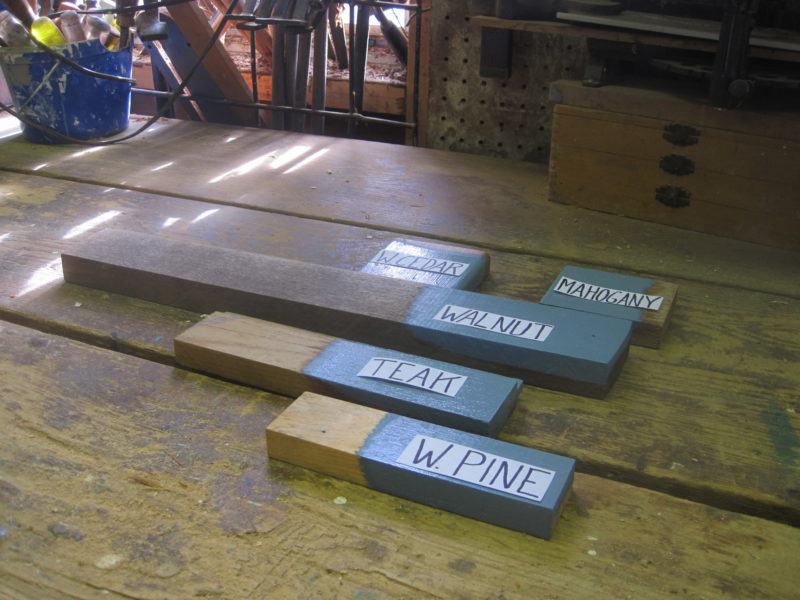 Capt. David Bill at Wooden Tangent, Mattapoisett, MA
Capt. David Bill at Wooden Tangent, Mattapoisett, MA Test samples painted in “Linseed Blue” linseed-oil paint
Boiled linseed oil and linseed-oil paint were used throughout the recent restoration of the Charles W. Morgan, the 174-year-old whaleship that is the centerpiece of Mystic Seaport, for both historical and practical reasons. During the restoration, new planking was saturated with multiple coats of boiled linseed oil. Old planking was stripped, water blasted, and then prepped with linseed oil. The entire hull was finish-painted with two coats of Allback’s black linseed oil paint. I spoke with Rob Whalen, the lead shipwright and project foreman for the MORGAN restoration, and it was clear that the Seaport’s research and testing had determined that Allback linseed-oil paint was the best choice for the preservation of the world’s sole remaining sailing whaleship.
I won’t know the outcome of my own paint trials for years to come, but linseed-oil enthusiasts support the manufacturer’s claim that the paint has excellent longevity while preserving the wood. Thad Danielson builds and restores wooden boats in Cummington, Massachusetts. “Prior to learning about Allback paint,” he wrote, “my boat paints always cracked and peeled in places, requiring sanding, filling, and repainting the entire boat every year. Last fall when we hauled SEA HARMONY, a 1937 Albert Strange yawl I’d painted with Allback paint, the yard manager looked at a few small breaks in the paint at plank seams and said: ‘Looks like your paint is peeling.’ I said it had been that way for seven years. He replied, ‘You have done very well.’ I also painted my Mower dory with Allback’s Old White. It goes on beautifully, and any encouragement to lay raw linseed oil on one’s boats seems all good to me.” Such longevity in a paint finish saves significant effort and expense in the long run.
Allback notes that its paints can take on a matte look over time due to the oxidation that occurs as linseed oil dries. Simply rubbing linseed oil or linseed wax on with a cloth will rejuvenate the paint’s luster.
On a cost comparison alone, Allback linseed-oil paint is pricier, at $0.30 per sq ft than Benjamin Moore SuperSpec at $0.09 per sq ft or Rustoleum Topside at $0.15 per sq ft. But to compare more accurately, dry weight needs to be factored. Linseed-oil paint is 100 percent dry weight: no added solvents evaporate from the paint; the linseed oil transitions from a liquid state to solid. The dry weight of petroleum-based paint is measured only after the water, volatile organic compounds (VOCs), and solvents evaporate from the paint. For some petroleum-based paints, only 40 percent of what’s in the can is dry weight. If you take into account the thickness of the film of paint after it has dried, quart for quart you’ll have nearly twice as much paint on your boat per coat of linseed oil paint.
Consider going organic with your next painting project. Using Allback Linseed Oil products will make a healthier, more effective, and—for traditional boats—historically appropriate way to protect your investment.![]()
Capt. David Bill is a Sea Survival Instructor at Tabor Academy in Marion, Massachusetts, and writes about his adventures on his blog, Boats and Life.
Allback’s full line of linseed-oil products is available at Viking Sales.
For more information about linseed oil see “Linseed Oil: Both a primer and a finish” by Harry Bryan, WoodenBoat, September/October 2009.
Is there a product that might be useful for boatbuilding, cruising or shore-side camping that you’d like us to review? Please email your suggestions.
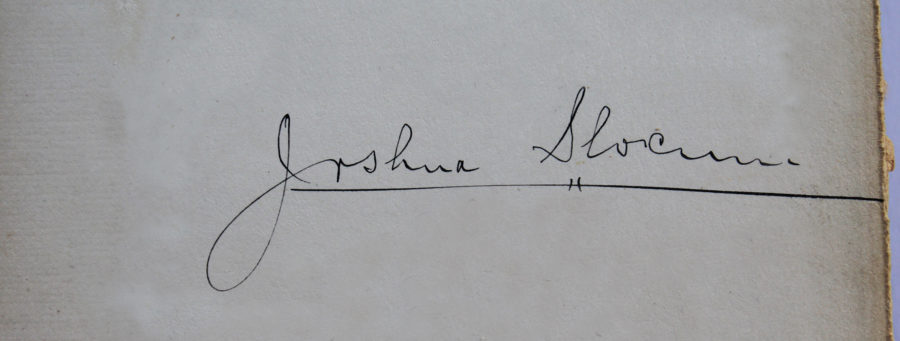
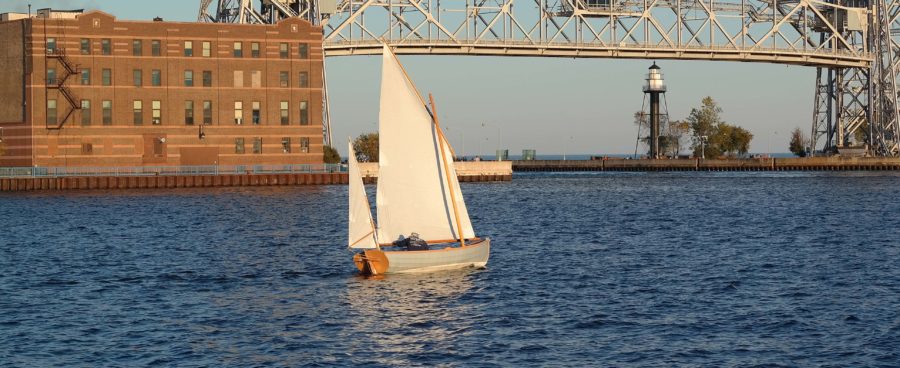
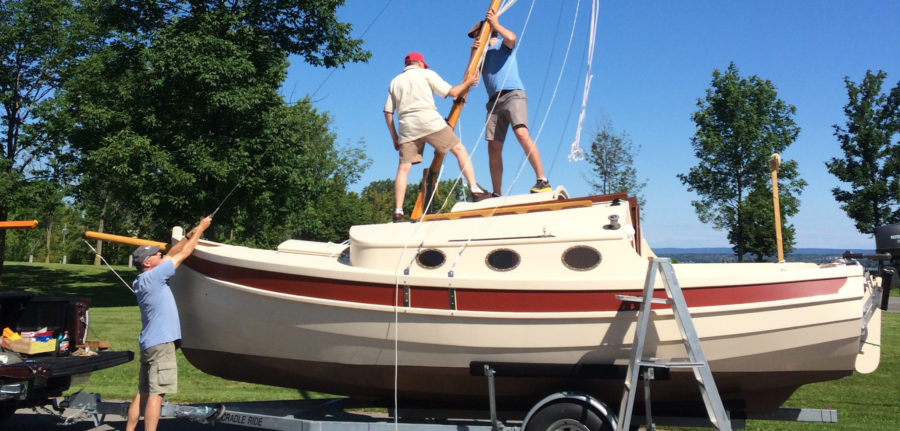
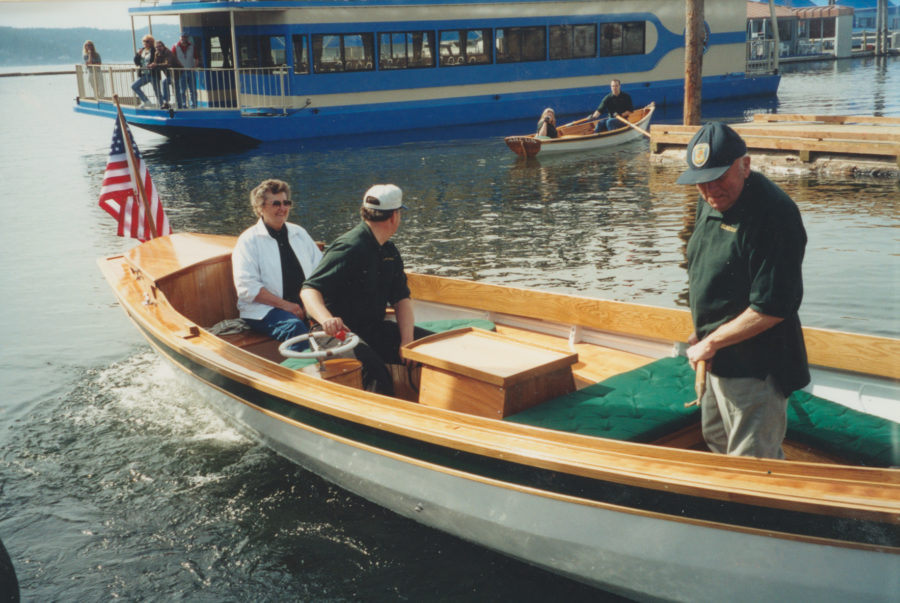
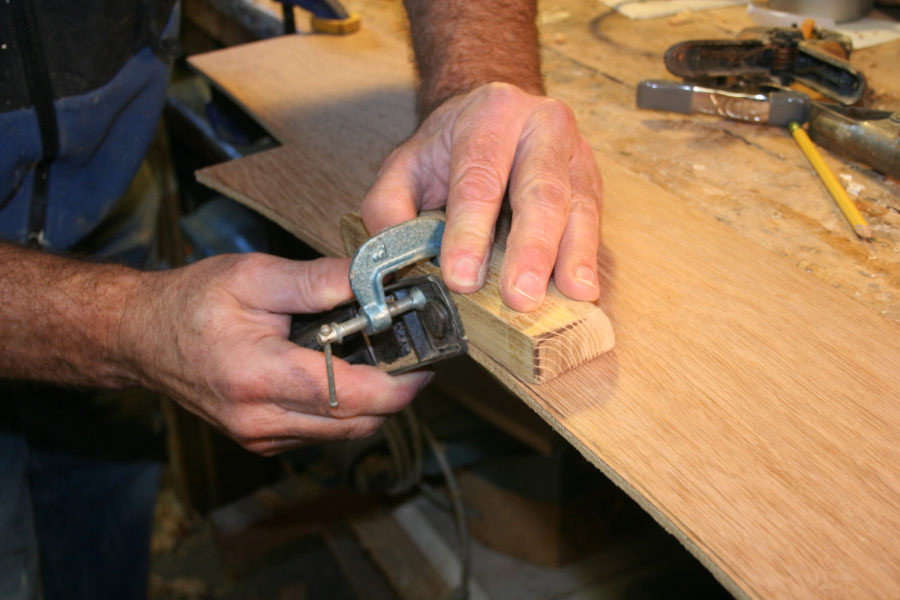
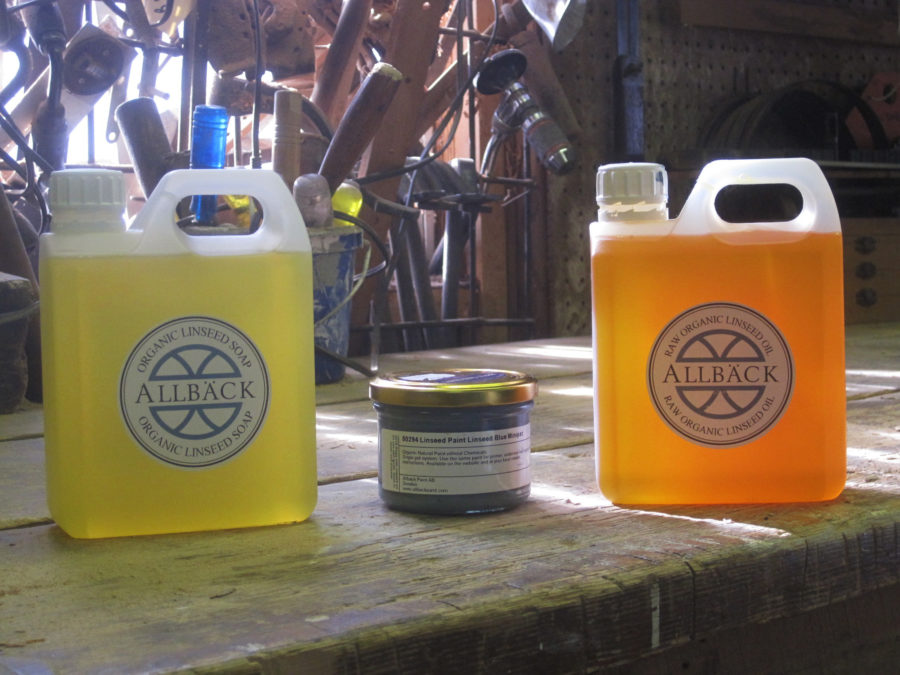
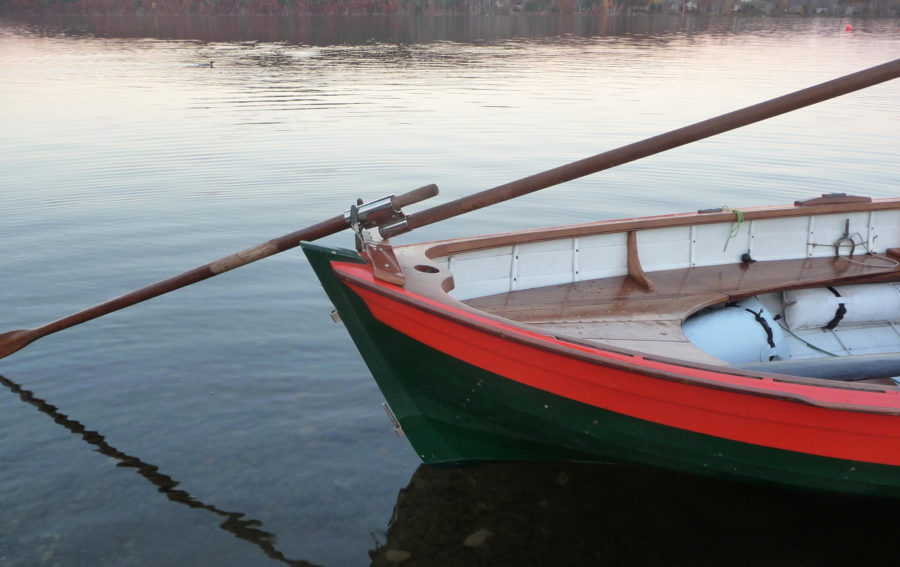

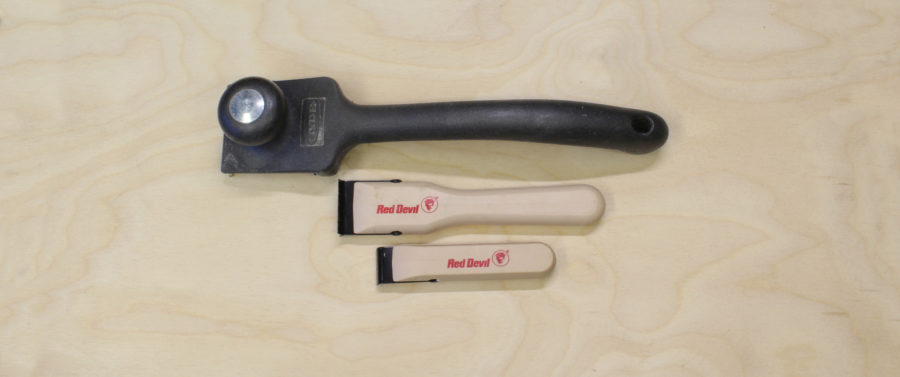
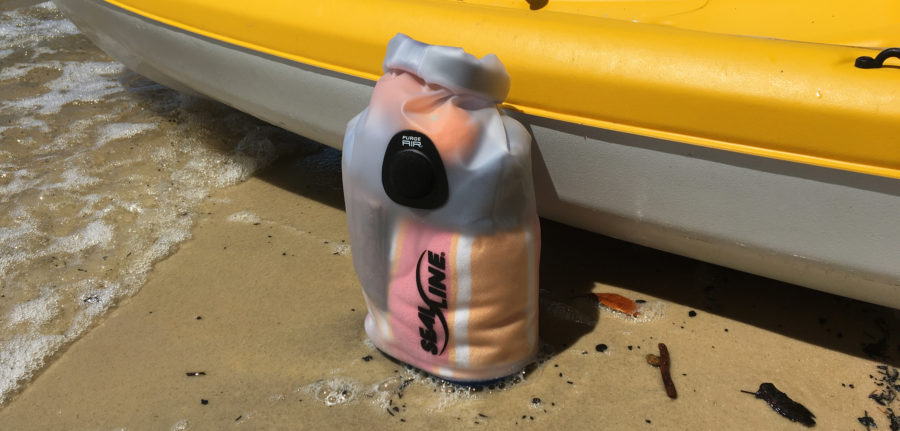
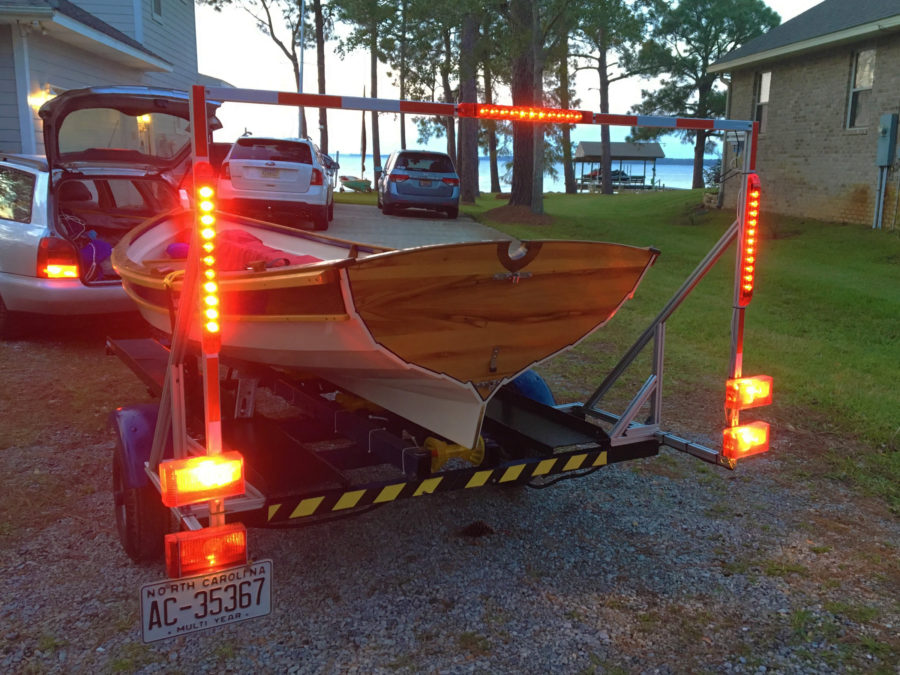
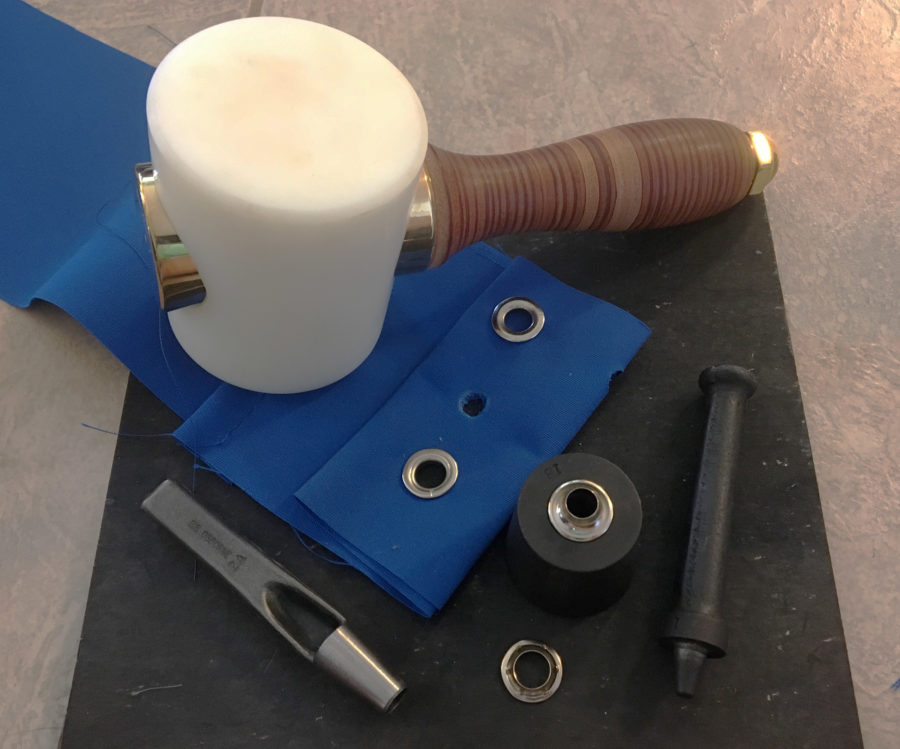
After a year and a half, an old, somewhat dried out, St. Lawrence-style rowing skiff has stayed in newly painted condition with Allback linseed oil paints including pine tar not mentioned in the article. The whole inside, floor boards, decks, gunwales, and seats were painted and preserved with a boiled linseed oil/pine tar mixture of several thin coats until it appeared saturated and finished. The sides and bottom exterior is Allback Zinc Oxide white with the sheer strake trimmed in Brick Red. The pine tar mixture also works very well to preserve garden tool handles and other outdoor wood preservation needs and as noted by Allback’s literature, was the long-standing preservative used on Viking ships.
Interesting article.
However (and I can’t remember which edition it was), some time back you published an article on using RAW linseed oil as both a primer and as the finish. In time, the raw linseed oil finish turned black.
Can you raise the various people involved in this article and the raw linseed oil article and present us with an objective report on the relative merits of each?
The reason I ask is that in my youth (1950s), Dad painted the floors variously with both raw and boiled linseed oil, each with terebine dryer added. He was a skinflint and bought whichever was cheaper – Mum went crook bigtime at him because the raw oil took longer to “dry.” I don’t remember either being superior, except for Mum’s comments. Both remained slippery for a short time. We lived in the Riverina region of New South Wales, Australia, which never really got cold, but summers were really hot. That may have improved drying time, or cure as it was a composite finish.
Brian Byrne
Queensland, Australia
Tacked on to the end of the article you’ll find a reference to Harry Bryan’s article in WoodenBoat about using using linseed oil as primer and finish. We’ll take a look into revisiting that topic.
Christopher Cunningham, Editor, Small Boats Monthly
Great article for wooden boats. One follow-up that may be important to mention
is the difference between organic raw linseed oil and organic boiled linseed oil. Organic raw linseed oil takes longer to dry; this is the reason it is an excellent base coat as it has time to penetrate deep into the wood grain. The organic boiled linseed oil is what our linseed oil paint is made with. The Allback boiled
linseed oil is actually boiled three times: first sterilized and then boiled two more times. This
is to to enlarge the molecules so the paint will dry faster and stay on the surface to create an
excellent UV protection.
Over time the linseed oil in the paint gets slowly absorbed into the wood grain. As the linseed oil migrates into the wood grain, the pigment on the paint’s surface will lose some of its oil, become exposed to the elements and look matte in finish. Applying more organic boiled linseed oil to the paint will bring its color back.
For maintenance of the linseed oil paint, you can use the organic raw linseed oil as well. As an example,
if the linseed oil paint dries out quickly, this is an indication that the wood had needed more organic linseed oil than it was given to start with. Once there is plenty of organic linseed oil all the way through, the surface coat will last a lot longer. It is important to understand that you are treating the entire thickness of the wood: This is a very different approach to any petrochemical oil coating that simply rides on the surface.
Pine tar is another significant material extensively used in boats, but that may be an entirely different article.
I’m not convinced wood needs to breathe. But nevertheless, I do like the look of old-fashioned oil based paint. And I like painting with it too.
I used Allback paint on a 22′ lapstrake skiff finished about 4 years ago, and then sold it, so I don’t know how well it has held up. However, I’d like to comment on a couple of things not mentioned in the article. First, living here in Alaska I’m not able to order solvent-based paints from suppliers outside Alaska to be shipped by air. They either need to be shipped by ground or by barge; very time-consuming. With Allback’s non-solvent, linseed oil-based paint this was not a problem. It came quickly by air, and the dealer, Soren Eriksson, was very helpful in answering my (initially skeptical) questions.
Secondly, I’m very sensitive to chemical-based products and usually get migraines when dealing with them, often even when I’m using carbon-filter chemical masks. Not so with the Allback, both the paint and the linseed oil. It smelled almost good enough to eat and I don’t recall using a mask, though from four years ago I can’t remember exactly. The paint was a joy to put on, just the right consistency.
Most of the skiff’s hull was oiled, so I only painted the sheer strake white, the sheer guard red and the guard just below the sheer strake blue. Unfortunately, I’d been oiling the skiff as it was being planked up, before I’d heard of Allback, with some boiled linseed I got at the local home center. Once I had heard of the Allback and began using that, I found that there seemed to be such a great difference in the quality of the oil that I wished I could have un-oiled the skiff with the first stuff and re-done it with the Allback, but I did give the whole boat another coat of boiled Allback linseed oil. I had ordered too much of their linseed oil for the project and I’m still slathering it on various other projects. The next boat I build—this winter, I hope—will definitely be painted with this wonderful product. Thanks for the great article.
Same results on plywood as on natural wood? Good results applied over previous enamel finish? Over epoxy?
The Viking web site has a long list of FAQs. This one applies to your question:
Can I paint with linseed oil paint on unknown surfaces?
Yes, good linseed oil paint adheres to all surfaces that are clean and dry. Example: wood, iron, gutters, glass, and alkyd and acrylic based paints in good condition. Linseed oil paint is also excellent for undercoating your car to prevent rust.
And this comes from my correspondence with the distributor (Soren):
Linseed oil paint sticks to any dry and clean surface. Removing the surface tension from various chemicals with the linseed oil soap is usually effective. The capillary effect of organic linseed oil allows the oil to actually penetrate steel.
Christopher Cunningham, Editor, Small Boats Monthly
Linseed oil paint will work with plywood but the adhesive between plies can create a barrier that does not allow moisture to freely flow through. Linseed oil paint will always be able to breathe, preventing any moisture under the linseed oil paint from being trapped, so any problem you may encounter with plywood is caused by its inability to breathe.
Linseed oil paint will adhere to enamel finishes and epoxy finishes. Make sure the surface is cleaned well with linseed oil soap. Wet the surface with water. Apply the linseed oil soap directly onto the surface and scrub with a stainless-steel pad. Work the soap into the surface. Wipe clean with a wet microfiber cloth.
That said, I’m not exactly sure why you would want to use the linseed oil paint on top of enamel or epoxy. It defeats the purpose and function of linseed oil paint and mixing paint types may have issues. Linseed oil paint and organic linseed oil preserves wood significantly better without enamel and epoxy.
The critical difference between an organic linseed oil and enamel/epoxy is that the capillary effect of the linseed oil allows it to soak in the way through the wood grain preventing any moisture from getting trapped. An enamel/epoxy creates a barrier on the surface that is very hard. Wood moves through seasonal changes. Enamel and epoxy coatings will become very rigid after a while and when it starts creating fine cracks, this is the time when trouble starts when applied on wood. Removing the old coating is of course better but it can work by applying the linseed oil paint on these hard coatings as well. Sometimes it will protect the old coatings making the wood last longer.
As I recall, linseed-oil soaked rags can catch fire through spontaneous combustion.
Quite right. Linseed oil oxidizes as it dries and generates heat in the process. Rags provide insulation that retains the heat and allows the temperature to rise high enough for the rags to ignite. When I’ve finished with an oil-soaked rag I take it outdoors and hang it up to dry. Having all of the surface exposed to the air dissipates the heat as the linseed oil cures. Others use a water-filled metal container with a tight-fitting lid. Submerged, the oil can’t oxidize and generate heat, but I can’t say what happens when the rags are removed from the water, disposed of and the water runs off and evaporates. I prefer getting the rags out of and away from the house, then putting them in the trash after they’ve dry thoroughly.
Christopher Cunningham, Editor, Small Boats Monthly
A very interesting article. My father was a painter and I learned from him to use linseed oil. Until now I used it very little, but on my new boat will try to use it more frequently.
I learned on the job as a professional wood finisher about linseed oil paint. To meet the high requirements of, for example, English heritage some linseed oil manufacturers leave out zinc white. Now lead is a no-no, but zinc white is a must to stop mould on horizontal surfaces. So choose a linseed oil paint that contains zinc white is my advice, just refining the oil is not enough to stop mould. Allback have introduced something now with zinc white, separate tin.